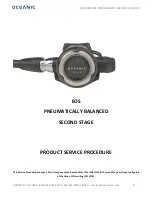
Performing Measurements
R&S
®
ZND
61
Getting Started 1316.2407.02 ─ 52
6. Select SYSTEM – [FILE] > "Recall Sets" > "Save..." to open the "Save" dialog for
recall sets.
7. In the "Save" dialog:
a) Select a file location ("Look in:").
b) Enter a name for the recall set file ("File name:").
c) Select "Save".
The analyzer saves the active recall set, containing channel, stimulus and trace
settings, to a
znx
file. This recall set can be restored in a later session.
6.2
Reflection S-Parameter Measurement
In a reflection measurement, the analyzer transmits a stimulus signal to the input port
of the device under test (DUT) and measures the reflected wave. Different trace for-
mats allow you to express and display the results, depending on what you want to
learn from the data. Only one analyzer test port is required for reflection measure-
ments.
In principle, a reflection measurement involves the same steps as a transmission mea-
surement. Note the following differences:
●
The basic test setup for reflection measurements involves a single DUT and ana-
lyzer port. For instance, you can connect the input of your DUT to port 1 of the ana-
lyzer as shown below.
VNA
1
DUT
1
You can also use the basic transmission test setup, e.g. if you want to measure
reflection and transmission parameters in parallel.
●
The analyzer provides special calibration types for reflection measurements. Use
the calibration wizard and select an appropriate type.
Reflection S-Parameter Measurement














































